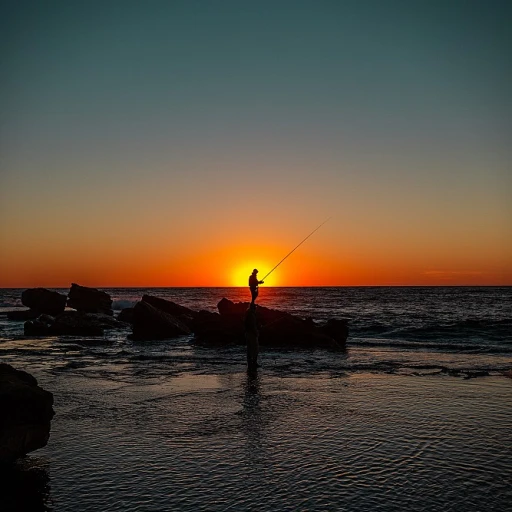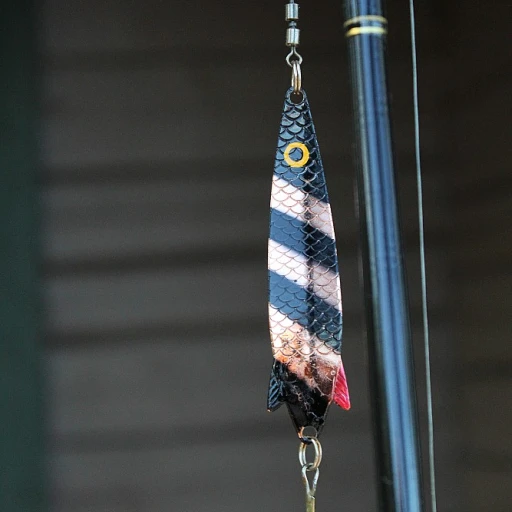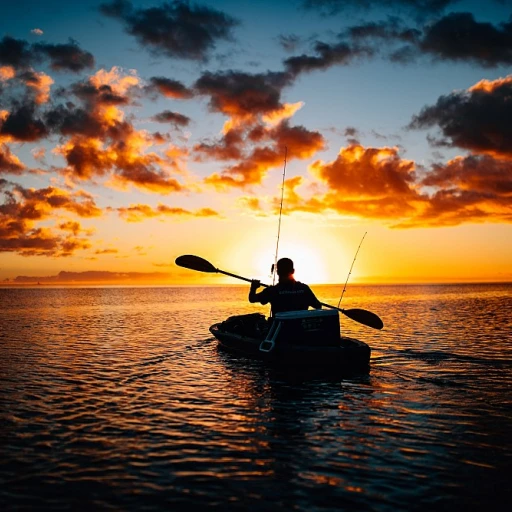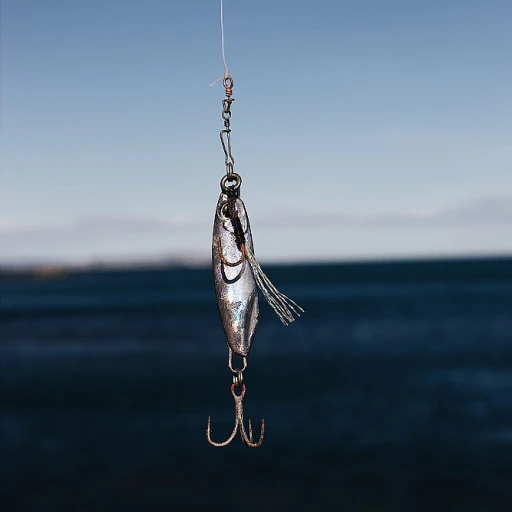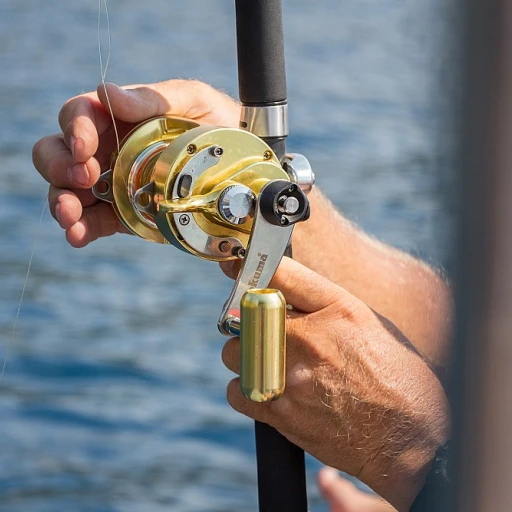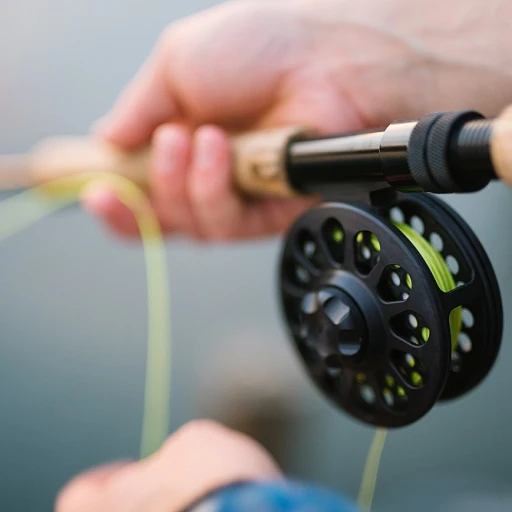
The largest fish ever caught: a tale of the great white shark
The great white shark: An iconic catch
When we talk about the biggest fish in the world caught, the great white shark (Carcharodon carcharias) often swims right to the top of the conversation. These nocturnal hunters are the stuff of legends and nightmares alike—larger than life in both myths and factual accounts. And some of the most eye-popping catch stories in fishing history feature none other than this giant predator.
One of the most famous records was set back in 1959 by Alf Dean off the coast of Ceduna, South Australia. Dean's great white shark weighed a whopping 2,664 pounds (1,208 kilograms). Alf used a rod and reel, capturing the attention of the global angling community and setting a world record that still stands strong in the International Game Fish Association (IGFA) annals.
Another jaw-dropping encounter happened in the waters around Malta in 1987 when an angler named Terje Nordvedt hooked a massive white shark. Although the scale of this particular catch isn't as widely recognized as Dean's, the buzz it generated demonstrated the timeless allure of catching one of Earth's most formidable predators. For those keen on uncovering the origins and epic tales of these extraordinary fishing endeavors—which still fire the imaginations of anglers everywhere—check out more epic catch stories here.
Of course, when it comes to catching these massive fish, it's not just the size or danger quotient that makes them legendary. Fishermen like Ken Fraser, who often spend their lives chasing these titanic targets, imbue the pursuit with a sense of enduring adventure and undying hope. Many of these anglers will tell you that fishing for a great white is as much about mental toughness and patience as it is about physical prowess and technical know-how.
It's worth noting, though, that the great white shark isn't the only behemoth that roams our oceans. As you dive deeper into the annals of legendary catches, you'll meet other gigantic fish that have etched their own marks on history.
Giant catfish: freshwater behemoths
Enormous freshwater phenoms
When it comes to giant catfish, the Mekong giant catfish is king. These freshwater giants hold their title as one of the largest species in the world, with some individuals pulling the scale down at an astounding 646 pounds (293 kg). In 2005, a 9-foot (2.7 meters) catfish was caught in northern Thailand by local fishermen, showcasing the enormous size these fish can achieve. Records of such mammoth catches are verified by the International Game Fish Association (IGFA), ensuring credibility and authenticity.
Other remarkable species include the Wels catfish, common in European rivers, capable of reaching lengths of up to 16 feet. An angler named Terje Nordvedt reportedly caught a 250-pound (113 kg) wels catfish in Spain's River Ebro, a hotspot for trophy catfish that draws fishermen from around the globe.
Ken Fraser is another name that resonates in the fishing community; however, his significant catch wasn’t a catfish but a historical 1496-pound Atlantic bluefin tuna, bringing a different yet equally impressive freshwater horizon.
If you care about more fantastic records about another freshwater marvel, head over to the blog post about striped bass catch.
Record-breaking bluefin tuna catches
Bluefin tuna: majesties of the open ocean
You wouldn't believe the sheer power and size of bluefin tuna until you see one up close. This fast-swimming predator is a crown jewel among anglers, mainly due to its immense size and exceptional strength. Let's dive into the astonishing record-breaking catches of bluefin tuna that have left everyone in awe.
One of the most jaw-dropping catches was made by renowned angler Ken Fraser from Nova Scotia, Canada. On October 26, 1979, Ken secured a lasting place in fishing history by catching a bluefin tuna that weighed a mind-blowing 1,496 pounds. The tuna, caught using a rod and reel, remains the heaviest bluefin tuna ever documented by the International Game Fish Association (IGFA). It's so iconic that anyone interested in truly understanding the magnitude of this feat should check out biggest tuna ever caught.
Bluefin tuna are often caught in the Atlantic and Pacific Oceans, and the competition amongst anglers to break records is fierce. Another notable catch is by Hemphill White in 1952 off the coast of Nueva Esparta, Venezuela. He managed to land a 977-pound Atlantic bluefin tuna, setting a benchmark that few have been able to reach since.
These giants are not just famous for their size but also for the fight they put up. Hooking a bluefin tuna can take hours of intense battle. The power of these fish is so well-known; it’s often the experience and stamina of the angler that seal the deal. This is what makes bluefin tuna fishing a thrilling, bucket-list event for many. And it doesn’t hurt that bluefin tuna is considered a delicacy, valued highly in markets around the globe.
Anglers from around the world flock to hotspots such as the coastlines of Nova Scotia in Canada, the Mediterranean Sea, and the waters off Australia to get a shot at reeling in one of these magnificent creatures. With growing interest and advanced tackle developed by companies, the future record-breakers might come from unexpected waters, uncharted territories teeming with these majestic beasts.
Remember, the IGFA plays a critical role in verifying these fish records to uphold the integrity of the sport. Every bluefin tuna record you hear about has gone through meticulous verification processes, ensuring that the heart-pounding stories behind these massive catches are, indeed, true. If you're curious about some extraordinary freshwater records, explore our coverage of the world record tarpon.
The colossal black marlin: oceanic titans
Majestic marlins: a tale of oceanic titans
Few fish conjure as much awe and excitement among anglers as the black marlin, known for its size and power. Found primarily in the warmer waters of the Indian and Pacific Oceans, these exceptional game fish can grow to immense sizes.
One of the most famous catches ever recorded involved a black marlin caught off the coast of Cabo Blanco, Peru. This catch, which remains a hallmark in fishing history, was achieved by Alfred Glassell Jr. in 1953. The marlin he caught weighed an incredible 1,560 pounds (707 kg), earning a spot in the International Game Fish Association (IGFA) record books. This towering figure continues to inspire anglers worldwide to chase these oceanic giants.
The journey to catch a black marlin isn't for the faint-hearted. Anglers often recount tales of long, grueling battles that can last several hours. These fish are renowned for their strength and speed, capable of jumping over 10 feet out of the water in dramatic displays.
As with other marlin species, the black marlin is a highly prized catch in the sport fishing world. It's not just about the size but also the sheer thrill of the chase and the fight. Many fishing tournaments are centered around these magnificent creatures, testifying to their importance and the excitement they bring.
But it’s not just the black marlin making headlines. The blue marlin, both Atlantic and Pacific varieties, also boasts impressive stats and brings its own share of glory. According to the IGFA, the largest recorded Pacific blue marlin was caught by Jay de Beaubien in 1982, weighing a staggering 1,376 pounds (624 kg) off the coast of Kona, Hawaii.
Atlantic blue marlins are no less impressive. Roberto Diaz holds the record for the largest catch, a colossal 1,402-pound (636 kg) specimen caught off the coast of Vitoria, Brazil, in 1992. These catches are a testament to the enduring allure of marlin fishing and the impressive skills of the anglers who pursue them.
The sheer size and strength of these fish make them a dream catch for many. Stories of epic battles, often spanning several hours, are commonplace among seasoned anglers. As recounted by Ken Fraser, a veteran of the sport, “The challenge is unmatched. You're up against one of the ocean's most formidable creatures. It's an adrenaline rush unlike any other.”
With their size, speed, and power, marlins continue to be the centerpiece of countless fishing expeditions and tournaments. For more insights into record-breaking fish catches and the legends that surround them, check out our detailed analysis of monumental catches.
The massive tiger shark: a predator of the deep
Notorious tiger sharks: masters of the ocean depths
When it comes to sheer power and mystery, the tiger shark stands out as one of the most formidable predators in the ocean. These beasts, often ranking as some of the largest species caught in fishing history, have intrigued and terrified anglers for decades.
A notable record is held by Walter Maxwell, who caught a massive tiger shark weighing 1,780 pounds off the coast of Myrtle Beach, South Carolina, in 1964. This giant was undoubtedly a challenge, and the story remains famous in fishing lore. According to the International Game Fish Association (IGFA), this catch holds a lasting legacy in the world of game fishing.
In more recent times, Ralph Bandini's record catch of a 1,065-pound tiger shark in California also stirred the fishing community, underscoring how these giants can still be found lurking in the ocean depths. The tiger shark's reputation as a fierce predator is only matched by its sheer size and weight; some can grow over 15 feet long and weigh more than a ton.
Known for their distinctive vertical stripes that dissipate as they mature, tiger sharks also have a reputation for not being picky eaters. This has led to tales of catching sharks that had ingested everything from license plates to rubber tires. Their varied diet makes them fascinating probes into the marine ecosystem, and a catch involving such a creature often holds anecdotal, if not scientific, interest.
Researchers and anglers alike are fascinated by the adaptability and mystery surrounding these sharks. For instance, a study published in the Journal of Fish Biology in 2001, led by renowned marine biologist Terje Nordvedt, observed tiger sharks' migratory patterns, shedding light on their elusive nature.
The thrill of catching a tiger shark also ties into the broader passion for record-breaking big game fishing. The physical and mental challenge of reeling in a predator this size is a tale worth telling. It's not just about the catch, but the entire adventure, from the anticipation of the first bite to the exhausting struggle of bringing the titan into the boat.
Greenland shark: the ancient giants
Ancient depths: the mystery of the Greenland shark
If you thought the great white shark was the longstanding heavyweight champion, wait till we dive into the tale of the mighty Greenland shark. These behemoths, scientifically known as Somniosus microcephalus, have captured imaginations and research interests around the globe. Unlike their more aggressive cousins, Greenland sharks are a bit like the sleepy giants stirring in the icy waters.
Living in the cold waters of the North Atlantic and the Arctic Ocean, these giants could very well be the oldest living vertebrates. Their age can be estimated through their eye lenses, and guess what? They can live up to 400 years! Talk about grandpa of the seas. According to a study by Julius Nielsen, a marine biologist from the University of Copenhagen, one Greenland shark was estimated to be around 392 years old.
But that's not where the intrigue ends. These sharks can grow to enormous sizes, often exceeding 20 feet in length and weighing over 2,200 pounds. To give you a sense of scale, that's equivalent to the length of a small bus and a ton of weight, literally. The biggest recorded Greenland shark was caught off the coast of Norway in 1934, and it weighed a whopping 2,248 pounds.
Greenland sharks may not be as flashy as other record-holders, like the gigantic bluefin tunas or the tiger sharks, but their sheer size and age are enough to etch them permanently into fishing history. Terje Nordvedt, a seasoned angler from Norway, recalls his encounter, "It was like pulling a living fossil from the abyss. The slow, lumbering giant felt almost prehistoric."
These giants are slow swimmers, maintaining a leisurely pace of around 0.3 meters per second. Yet, despite their slow pace, they are formidable predators. They've been known to consume seals, other sharks, and even large fish. There's even a legendary tale of a Greenland shark found with a reindeer hide in its stomach!
Given their slow growth and late maturity, Greenland sharks face conservation challenges. Overfishing and environmental changes threaten these ancient beings. The NOAA has been conducting studies to better understand and protect these fascinating creatures, whose lifespans and mysterious lives hold the key to ocean history.
Atlantic and Pacific blue marlin: record catches
Marlin wonders: tales from the Atlantic and Pacific
When it comes to the mighty marlin, there's nothing quite like the fury and power of these oceanic titans. Setting the scene, anglers from all around the globe have pursued these majestic creatures, aiming to break records and make a name for themselves. Among the countless marlin fishing triumphs, the Atlantic and Pacific species have provided some of the most jaw-dropping moments.In the Atlantic, Cabo Blanco, Peru, is legendary for its marlin fishing. Cabo Blanco, often called the 'Marlin Capital of the World,' has witnessed some of the largest marlin ever caught. One notable story is that of Terje Nordvedt who reeled in a colossal 1560-pound Atlantic blue marlin. The struggle lasted for hours, showcasing not only the size but the incredible endurance of these creatures.
Over in the Pacific, the town of Cairns in Australia is a hotspot for marlin catches. The International Game Fish Association (IGFA) has certified numerous records from this region. One of the most famous recorded is a Pacific blue marlin caught by angler Frank Coons, weighing in at an astonishing 1376 pounds. This great catch remains one of the largest marlin snagged in the Pacific.
The allure of marlin fishing lies not just in their immense size but also in the thrilling experience of the chase. Anglers like Ken Fraser, who dedicated years to perfecting their marlin fishing techniques, often relay tales of intense battles and near-misses that ignite the imagination of fishing enthusiasts. Whether you're casting off the coast of Nova Scotia or chasing those giants in Hawaii, the marlin holds a place of honor in the annals of giant fish stories and records.
The role of the International Game Fish Association (IGFA) in verifying records
IGFA verification in record fishing
When it comes to confirming the biggest fish in the world caught, the International Game Fish Association (IGFA) is the gold standard. The IGFA is globally recognized as the principal authority on fishing records, ensuring that each claim meets rigorous criteria. Without their stamp of approval, records don't get the credibility they deserve, making their process indispensable for anglers worldwide.
Established in 1939, the IGFA has been dedicated to the conservation of game fish and promotion of responsible angling practices. The organization verifies world records using precise and strict protocols. From fish measurements to tackle used, every detail must be documented and submitted for a record to be considered.
A key component of record verification by the IGFA is the integrity of the tackle used. Anglers are required to use certified equipment, and the fish must be caught following IGFA’s angling rules. Certificates of authentication are issued only after a thorough review of all submitted evidence. This level of scrutiny ensures that the records are accurate and legitimate.
For instance, the verification of Ken Fraser's Atlantic bluefin tuna record, a fish weighing 1,496 pounds caught off Nova Scotia in 1979, met all IGFA requirements. Fraser used certified tackle, adhered to all rules, and provided detailed documentation, reinforcing why the IGFA's role is critical in the world of fishing.
Record-breaking process: data and examples
The IGFA maintains an extensive database of fishing records, accessible to enthusiasts and researchers alike. The database records details like the weight, species, location of the catch, and the tackle used. This transparency supports the IGFA’s commitment to the sport’s integrity.
Alongside the actual catch, the IGFA often highlights the stories of these record-breaking feats. These tales not only invigorate the fishing community but also inspire new generations of anglers. For example, the capture of Theresa Mathieson's 250-pound wels catfish in Spain (documenting the biggest freshwater fish caught by a woman) was celebrated widely in the angling community, illustrating the diversity and reach of record-setting catches.
Challenges and controversies
The process of verifying fishing records isn’t without its challenges. Claims that do not meet IGFA's stringent criteria are often rejected. This rigorous standard sometimes causes discontent among anglers who feel that previous records might have had less scrutiny. Nevertheless, this consistency is crucial to maintain the fairness and reputation of the sport.
One notable controversy involved the 2013 Greenland shark (Somniosus microcephalus) claim of a 1,708-pound catch. Questions arose about the angling method used, sparking debates within the fishing community. The IGFA's diligent review process ultimately rejected the claim, underscoring how their protocols ensure only the most credible records make the cut.
Conserving the sport for the future
Beyond verifying records, the IGFA plays a significant role in conservation efforts. By encouraging catch-and-release practices and advocating for sustainable fishing methods, they help preserve fish populations for future generations. Their educational initiatives also inform anglers about responsible fishing practices, promoting a respectful approach to the sport.

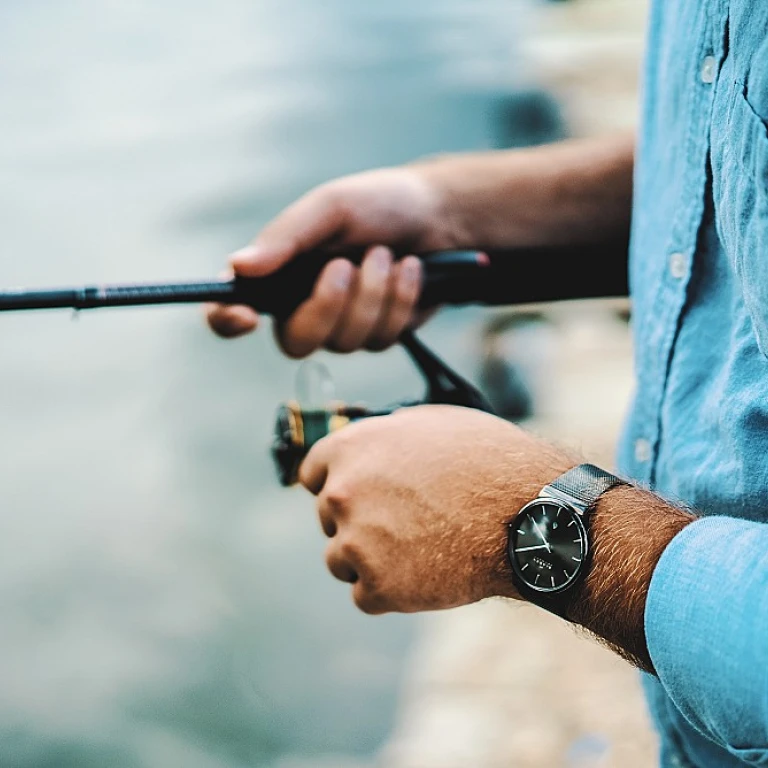


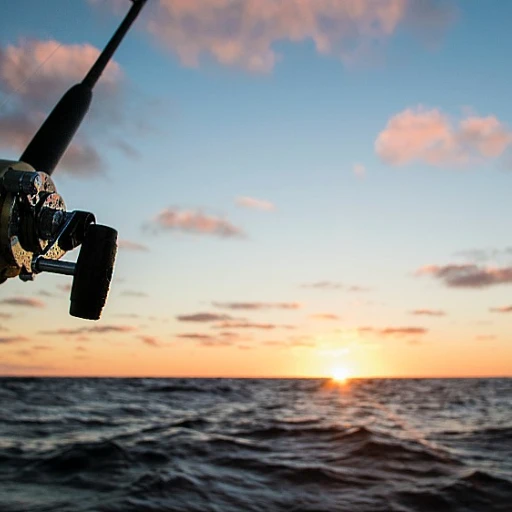

-large-teaser.webp)
